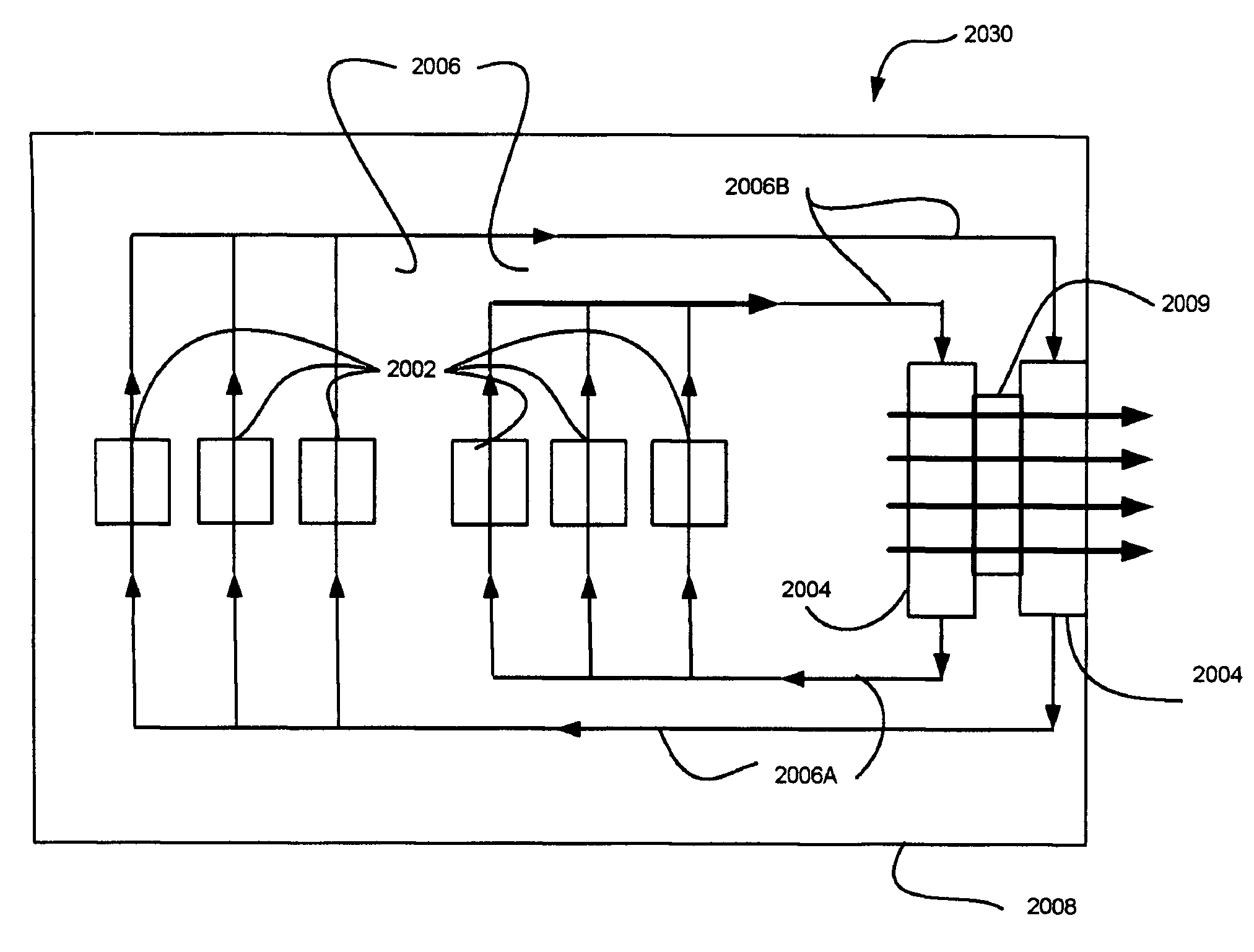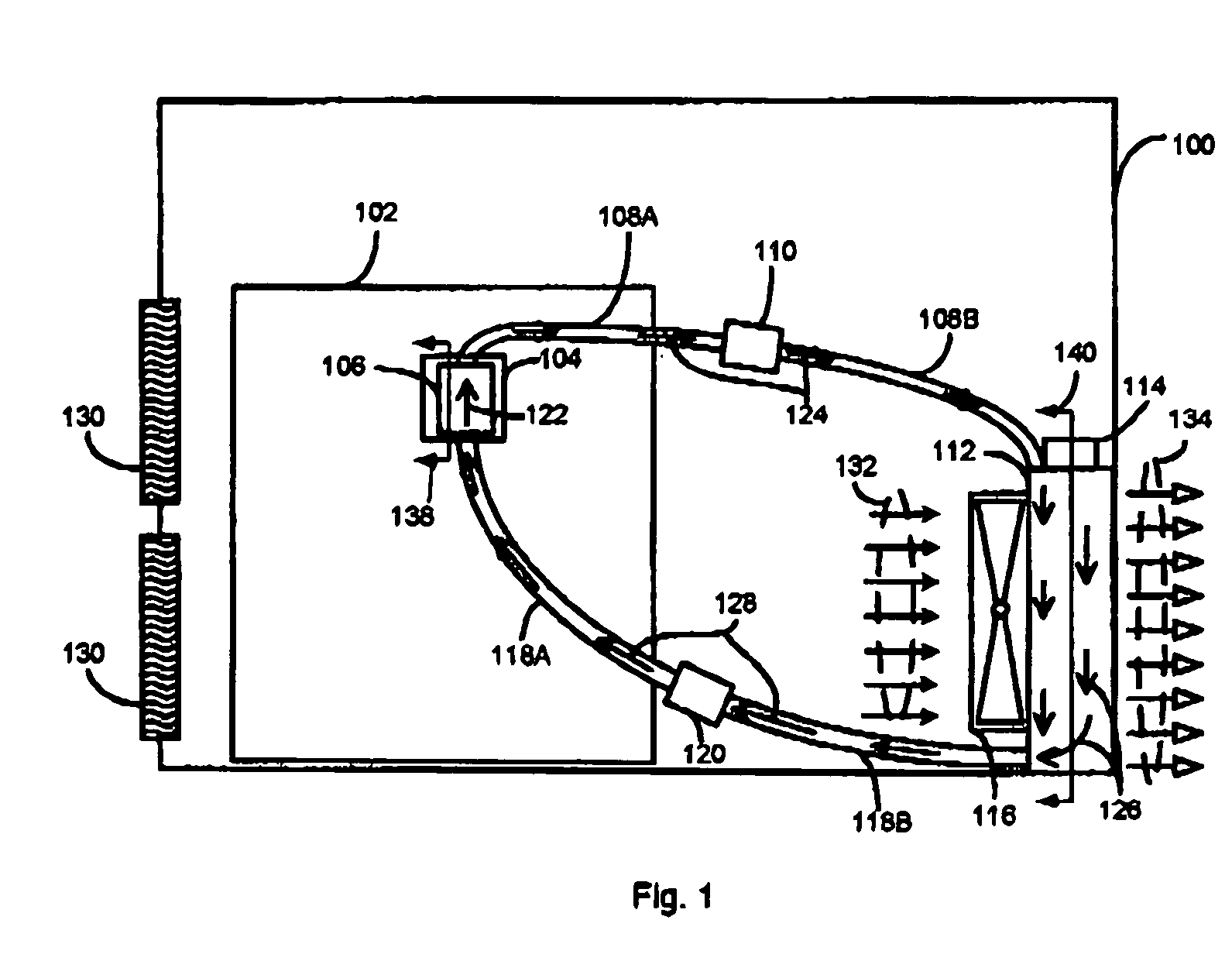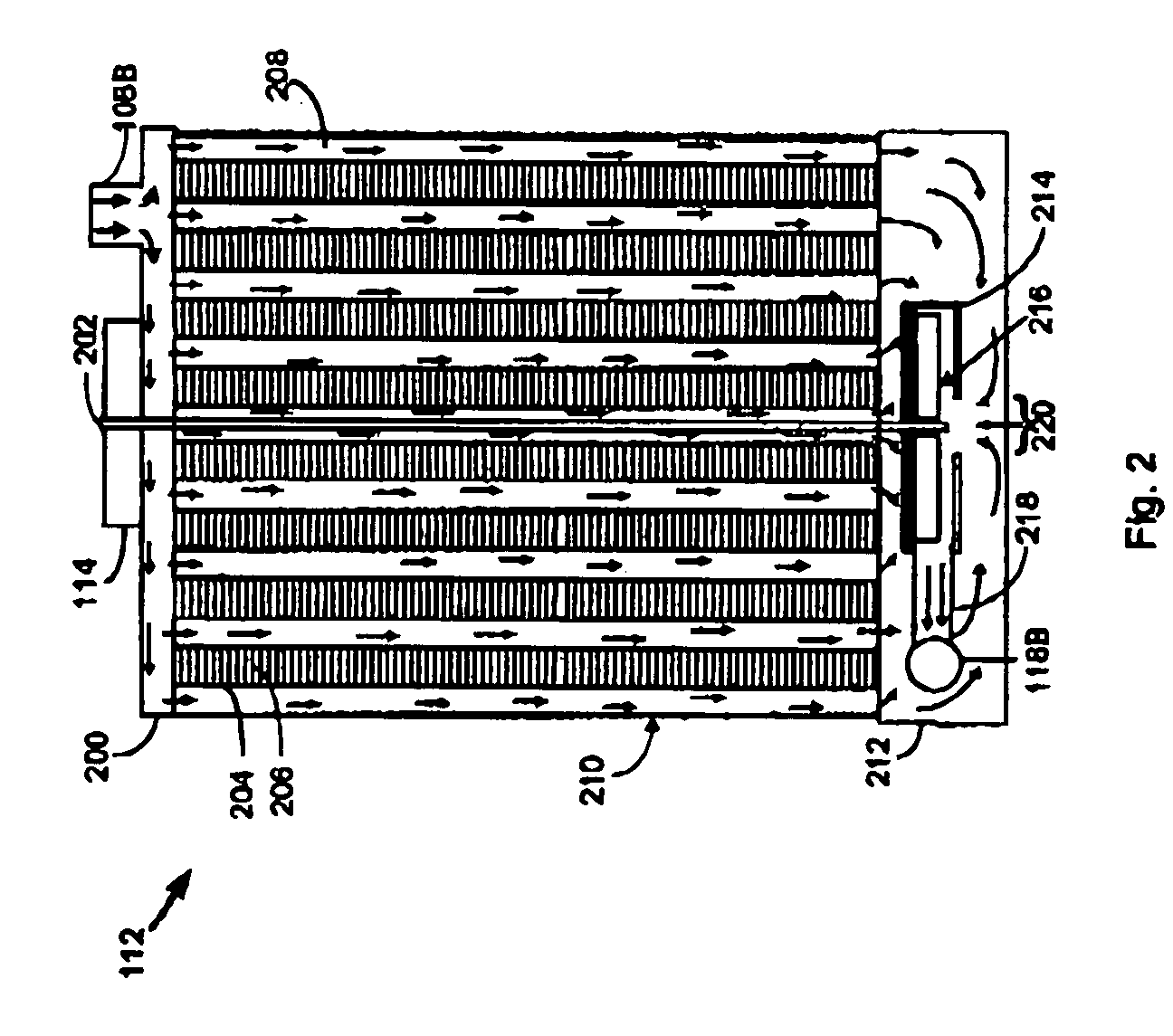Liquid cooling system
a cooling system and liquid cooling technology, applied in the field of liquid cooling systems, can solve the problems of heat generation, other systems operating within the computing system may also generate heat, and add to the heat experienced by the processor
- Summary
- Abstract
- Description
- Claims
- Application Information
AI Technical Summary
Benefits of technology
Problems solved by technology
Method used
Image
Examples
Embodiment Construction
[0066]While the present invention is described herein with reference to illustrative embodiments for particular applications, it should be understood that the invention is not limited thereto. Those having ordinary skill in the art and access to the teachings provided herein will recognize additional modifications, applications, and embodiments within the scope thereof and additional fields in which the present invention would be of significant utility.
[0067]A variety of liquid cooling systems are presented. In each embodiment of the present invention, a heat transfer system in combination with a heat exchange system is used to dissipate heat from a processor. The various heat transfer systems may be intermixed with the heat exchange systems to create a variety of liquid cooling systems.
[0068]Several heat transfer systems are presented. Each heat transfer system may be used with a variety of heat exchange systems. For example, a heat transfer system is presented; a direct-exposure h...
PUM
 Login to View More
Login to View More Abstract
Description
Claims
Application Information
 Login to View More
Login to View More - R&D
- Intellectual Property
- Life Sciences
- Materials
- Tech Scout
- Unparalleled Data Quality
- Higher Quality Content
- 60% Fewer Hallucinations
Browse by: Latest US Patents, China's latest patents, Technical Efficacy Thesaurus, Application Domain, Technology Topic, Popular Technical Reports.
© 2025 PatSnap. All rights reserved.Legal|Privacy policy|Modern Slavery Act Transparency Statement|Sitemap|About US| Contact US: help@patsnap.com



